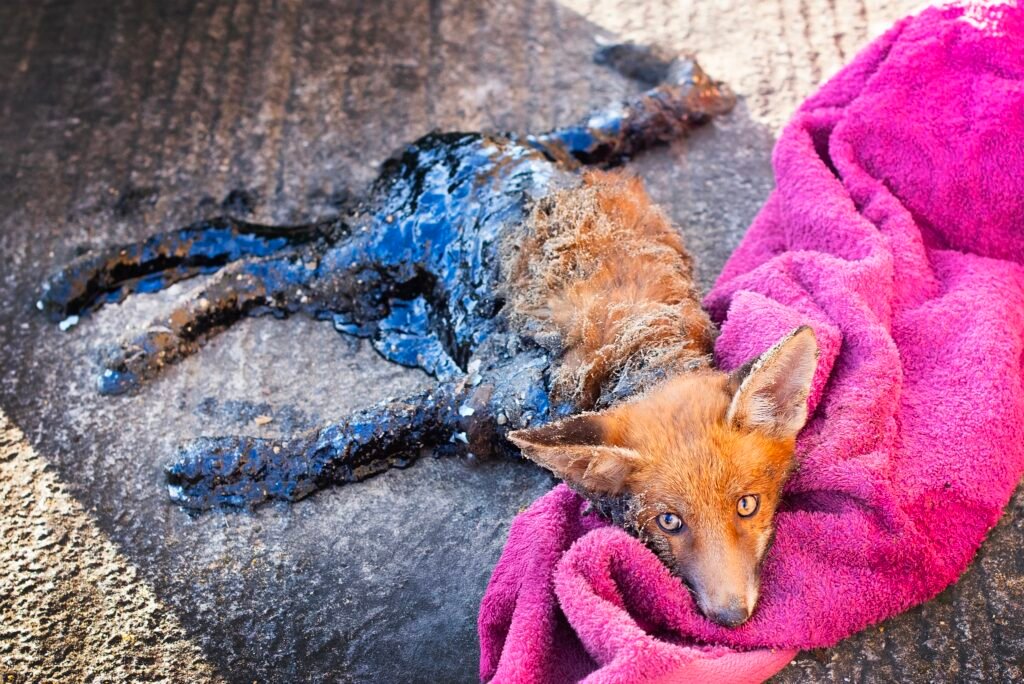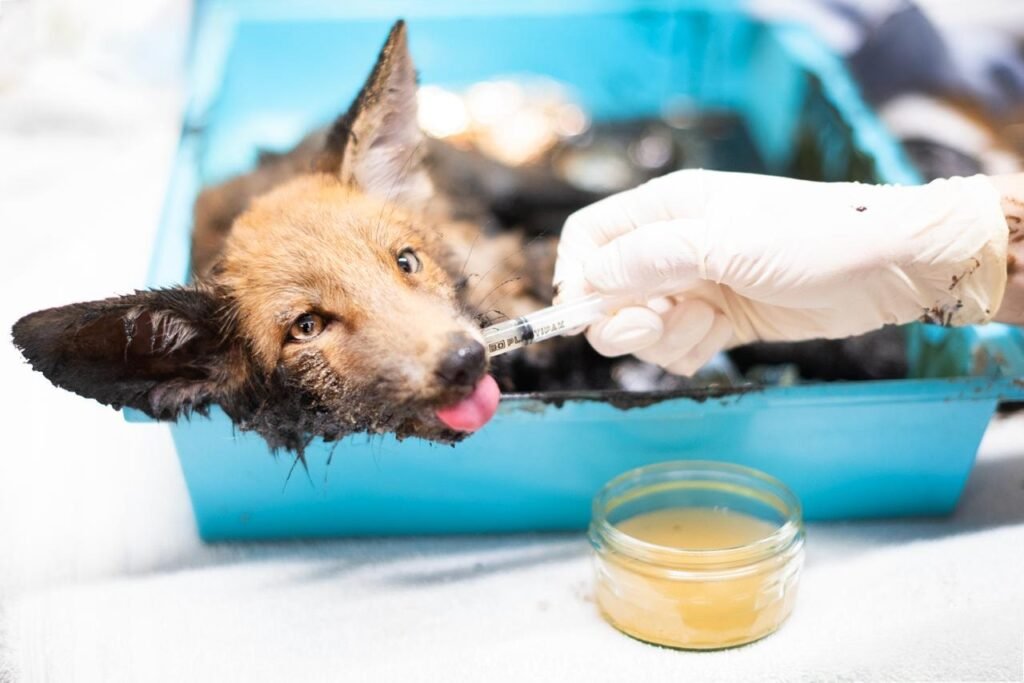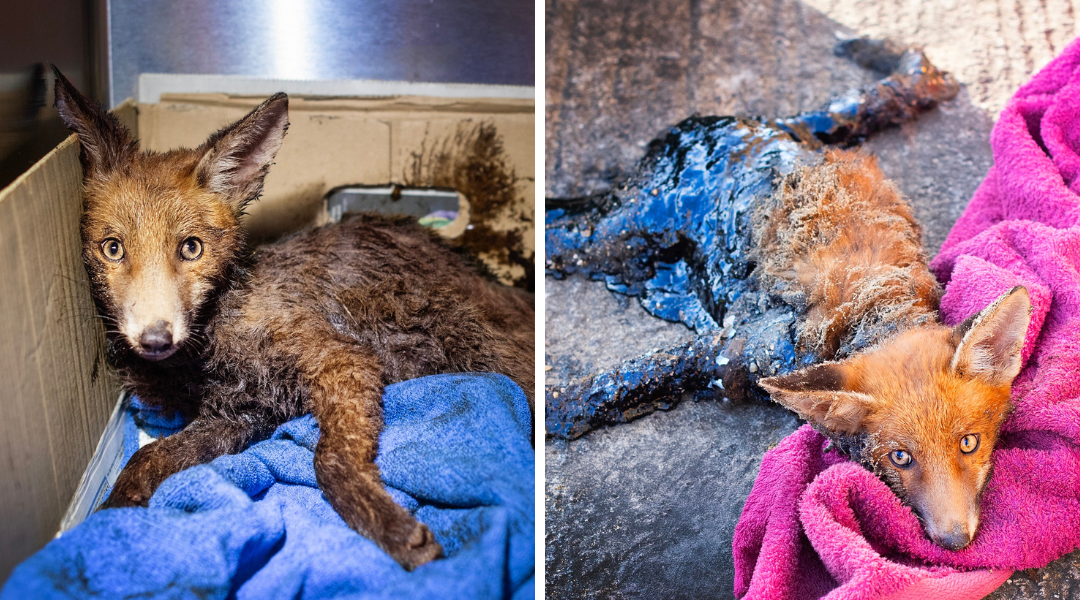A young fox cub has been rescued in one of the most harrowing cases South Essex Wildlife Hospital has seen in over three decades. The three-month-old cub was found on Thursday, completely covered in bitumen and stuck fast to a road surface in an industrial estate near Lea Bridge and Hackney Marshes in north-east London.
Screeches Lead to Shocking Scene

Workers in the area were alerted by the sound of desperate screeching. On investigation, they discovered the cub had fallen into a container of bitumen—a thick, tar-like substance used in road surfacing—and then became glued to the road.
“They heard him crying and somehow managed to get him out of the container,” said Lawrie Brailey, Operations Manager at South Essex Wildlife Hospital in a BBC interview. “But by then, he’d got himself stuck to the road. It was one of the most horrific cases we’ve seen in the 35+ years of wildlife rescue.”
A Long and Careful Rescue

Before the rescue team arrived, workers looked up online advice and began applying baby oil to the cub in a desperate attempt to help. When the professionals got to the scene at around 7:00 PM, the real work began.
“It took over 30 minutes just to free each limb,” Brailey explained. “We used baby oil and WD-40 to slowly soften the bitumen. His fur was so matted in some places that we had no choice but to cut it off.”
In total, over 30 bottles of baby oil were used to break down the sticky mess.
A Mother’s Heartbreaking Effort
During the ordeal, the cub’s mother was spotted nearby attempting to help.
“She was trying to scruff him, pick him up off the middle of the car park,” said Brailey. “It was heartbreaking.”
The team now hopes to reunite the cub with his mother. “Ideally, that needs to happen within a week,” he noted. “Any longer and she might reject him.”
The sight of the mother trying to reach her trapped cub was a powerful reminder of the instinctual bonds in the animal world—bonds that mirror our own sense of family and protection. For the rescue team, it reinforced the urgency of their mission: to not only save the cub’s life, but to give him the chance to return to the wild where he belongs.
Recovery Underway

Despite the trauma and intense physical stress, the fox cub is now in a stable condition at the South Essex Wildlife Hospital. He’s under continuous observation and has already shown encouraging signs of recovery.
“He seems to be fine and is now eating, urinating, and defecating,” said Brailey. “Now he looks like a fox again, with a couple of patches missing.”
Veterinarians are treating a leg injury sustained during the ordeal and monitoring the cub for any delayed effects of bitumen toxicity. The care team is also gradually reintroducing him to natural behaviors to build up his strength and confidence. Over time, he’ll be evaluated for mobility, fur regrowth, and stress response, which are all vital for a potential return to the wild.
A Message from the Front Lines of Wildlife Rescue

This rescue sheds light on the immense challenges wildlife responders face when urban hazards collide with the natural world.
“We see a lot of injury, death… When you go to something like that and look at that animal, you’re left wondering what you can do,” said Brailey. “The problem is, there’s not much information on what we do; it’s a lot of trial and error.”
The team at South Essex Wildlife Hospital often has to rely on creativity, experience, and sheer perseverance—especially in rare, extreme cases like this. Brailey expressed his relief at the positive outcome but emphasized the emotional weight such rescues carry.
If a reunion with the cub’s mother proves impossible, he will remain in expert hands, growing stronger each day until he can be released—restored to freedom, and to the wild life he was meant to live.







